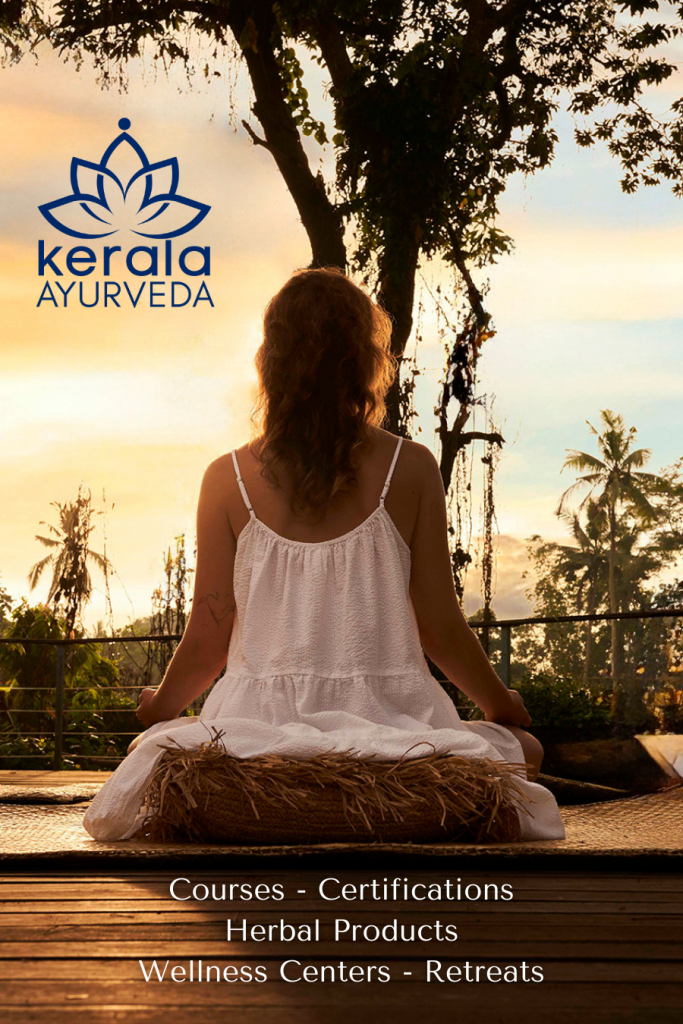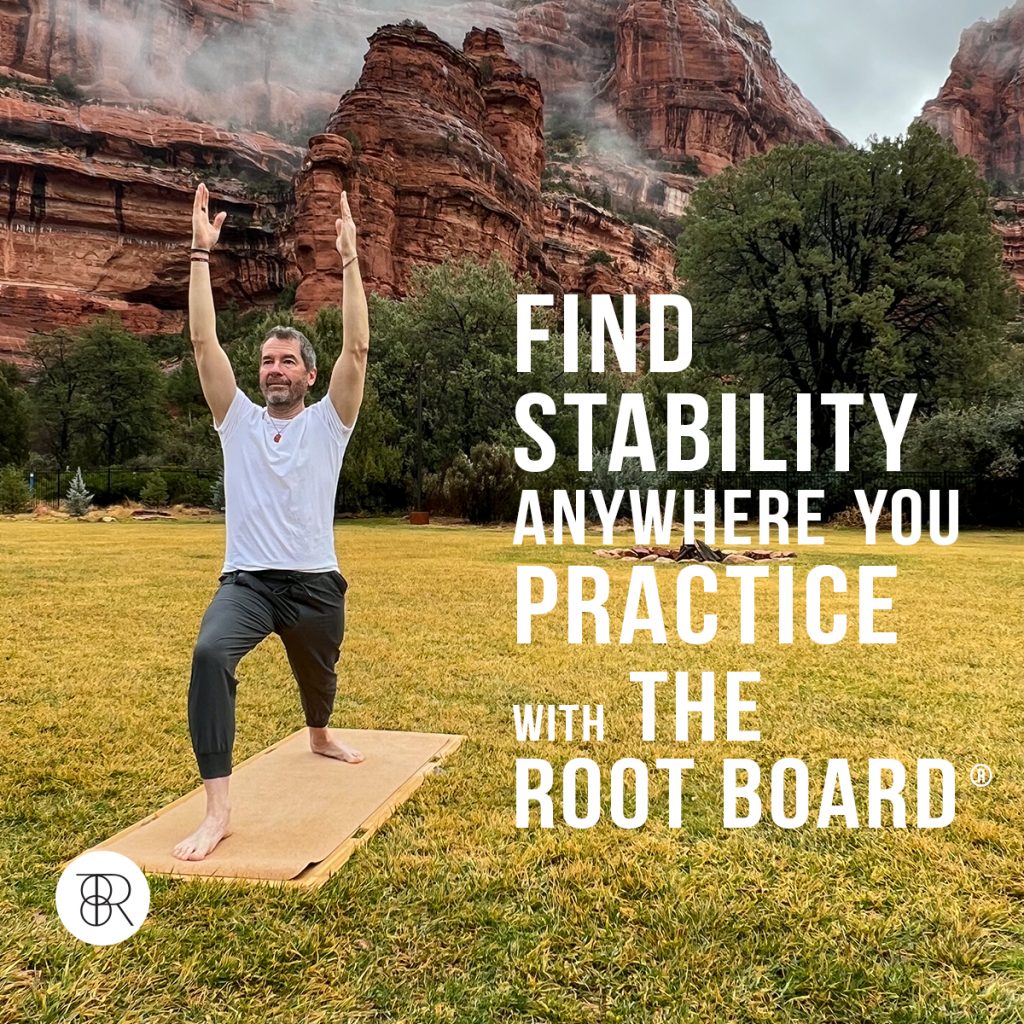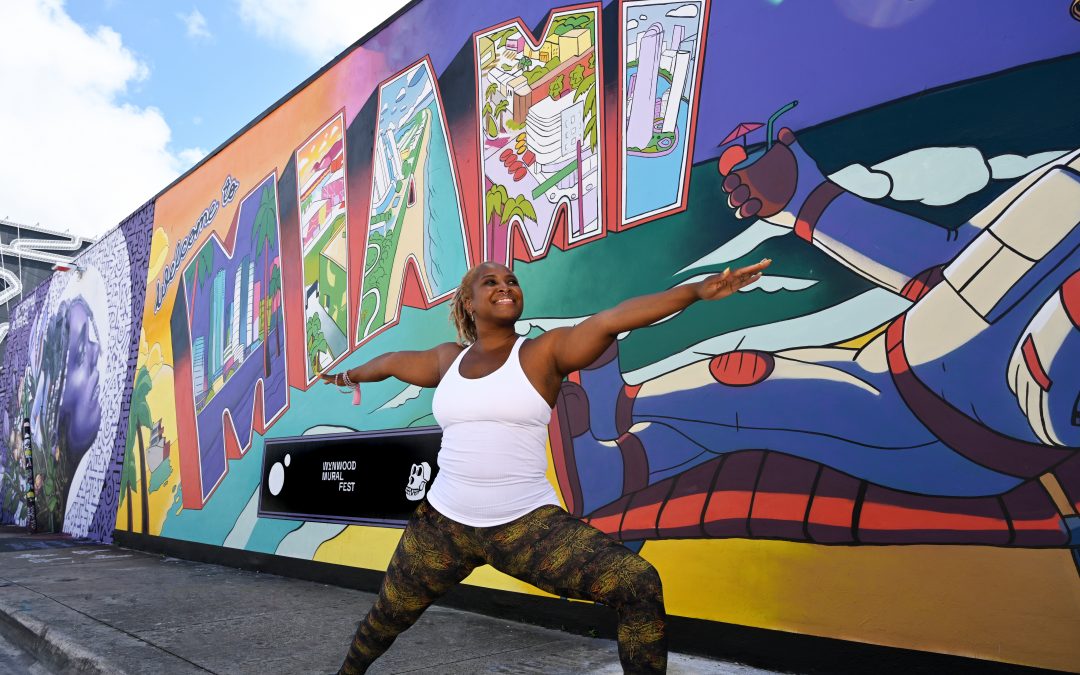
Apr 7, 2022 | Programming Spotlights, Sedona Yoga Festival Teacher Feature
For Shanna Small, yoga instruction isn’t about the physical practice — and can be as much about adapting tradition as needed for all practitioners to find flow. Her journey began with the more traditional Ashtanga lineage, but as she’s changed, so has her practice and her teaching. “I explore the intersection between social justice and yoga,” she says, “and my work these days is mostly in accessibility and the idea of living a yogic life.” Her goal is to offer the breadth of what yoga has to offer, beyond asana. SYF attendees who come to her classes can expect the interweaving of grace into explorations of the Sutras, and how we may dive deeper into our bodies with this integration of the mind.
That’s not to say that Shanna doesn’t teach strong asana classes. One workshop she’ll be offering will be based on asana that were handed down directly to Pattabhi Jois from Krishnamacharya in the way that he was taught, she says. What makes this strong, traditional practice uniquely Shanna’s, however, is the adaptation of this traditional style to be hugely accessible. “I’m going to teach to who shows up,” she says. “I’m going to tailor the class around whoever is present. This will invite people to really feel into their body, and to do the things that work and feel right for them.”
This means giving lots of different modifications, she says, and presenting different ways of looking at the postures. This insistence on adapting very traditional asana so that it may be explored — and enjoyed — by all is what Shanna means when she says that her mission is to integrate the true teachings of social justice and the Sutras into her classes. It’s what makes her teaching style accessible for all.
Adapting Tradition and Why It’s Important
Shanna recognizes that some people may take issue with her approach — that some may not think of Ashtanga as being fluid and adaptable. But she believes that that perception may have more to do with the typically able-bodied and young people who found themselves going to India to practice. When these students brought the teachings back to the West, “it became convenient to do more or less the same thing with everybody,” Shanna says. But there are people who studied directly with Pattabhi Jois, older teachers, “who say that the sequencing was different; that different people were given different things,” she says.
“I honestly feel in my heart that I am teaching according to tradition; that Ashtanga was never meant to be this very regimented dogmatic practice,” she says. “For me, it’s important to me because I believe that everyone should be able to practice yoga, and that when we say that, we need to mean it. And that means that yoga has to fit for where we are in our lives. If we create a very dogmatic rigid practice as people’s bodies and lives start to shift, what I’ve seen is that people start to feel a lot of shame.”
The Grace in Releasing Rigidity
Shanna will also be teaching a workshop around the idea of ishvara pranidhana, the niyama that instructs surrender, letting go, and release. It’s an interesting complement to her Ashtanga offering, which, again, is centered around the grace of letting go of the expectations that typically encapsulate that practice. “Grace is when we get into the flow of the universe,” says Shanna, “though I don’t mean that in a woo-woo way. Grace is really this idea that if we find a way to get in tune with nature and the universe, we’ll start to flow and find some ease in our day-to-day life.”
She says that, ultimately, that’s the purpose of studying the Sutras — to practice discriminative discernment of the eight limbs of yoga. When we are in line with the world around us, we are in line with grace. “Certain trees lose their leaves, others flower at certain times of the year, and others go dormant,” she says. “The universe knows its time and its purpose — it is always waxing and waning. It’s the same thing with our practice and making our practice accessible,” she says — it’s about creating a practice that allows the natural ebb and flow of your life to take you to mat exactly as you are.
Learn from Shanna in person at SYF this June! Tickets on sale now: bit.ly/SYF22Tix
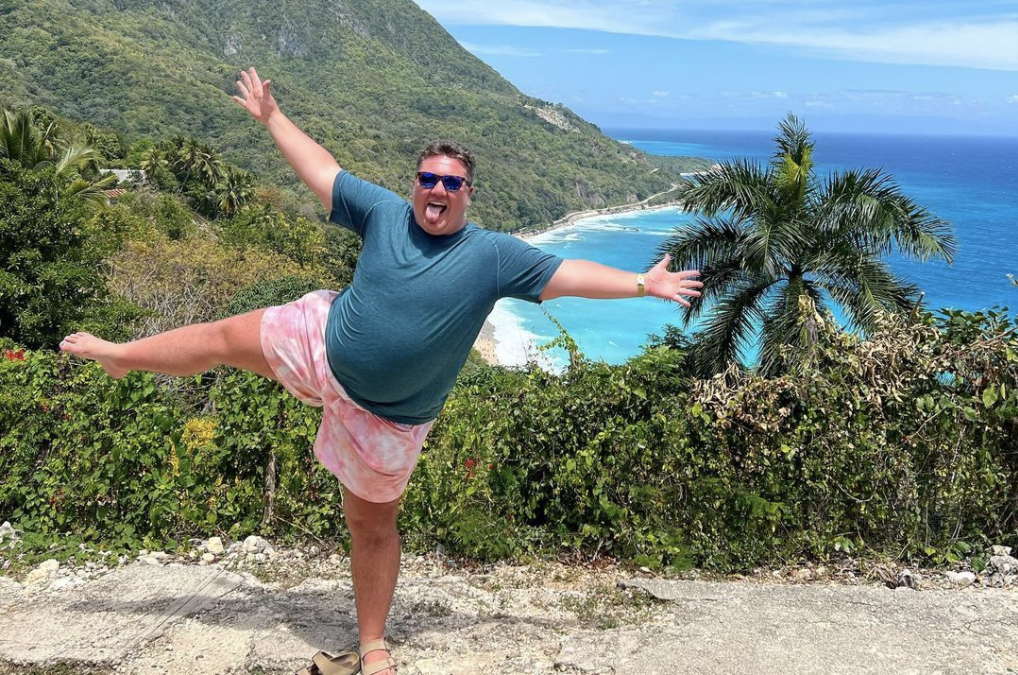
Apr 4, 2022 | Programming Spotlights, Sedona Yoga Festival Teacher Feature
At the very beginning of our conversation, Allé K says that as a trans yoga teacher, he’s over-the-moon to be kicking off Pride Month by teaching at SYF this year. “I’m really excited to bring some in-person pride classes to SYF,” he says. “I also went to most of high school in Arizona, so I’m excited to return home, in a sense. It feels a bit full circle. And the desert is just really magical and healing,” he says.
Allé’s offerings are centered around truly promoting diversity and inclusion in yoga, and he’s passionate about being sure that all bodies feel like they have a place in practice. “Pride is one time a year where we get to really celebrate our trans identities and be out and loud about it,” he says. “It’s a joyful time for trans folks. I’m also a fat yoga instructor, in a larger body,” he says, so his classes typically center fat folks.
When asked what trans and fat affirming classes are all about, Allé says that it’s really about holding space. With his kapha-dominant dosha, Allé acknowledges that space-holding is one of his specialities. “How can we really show up and not try to put our perspectives on others?” he says. His classes encourage all participants — both in the class and beyond — to truly breathe deeply, and consider how to be an embodied person.
For people who identify as queer or trans, Allé says that his presence at the front of the class alone is validating. “Just having a teacher of your shared identity is really important,” he says. But this is equally important for cisgender students as well — being around trans folks is a crucial first step toward cultivating compassion, and living from a place of true yoga. This is what begins to activate a kind of living yoga in a person’s life. As an example, he acknowledges that correct pronoun usage is ahimsa. “Letting go of attachment to the gender binary, to the way you perceive a person’s gender — that’s ishvara pranidhana,” he says. “It’s about humility, understanding, and removing the ego. It’s about acceptance, and that’s the yoga.”
How This Plays Into Grace
Having studied with Dharma Mittra in NYC, Allé has no qualms talking about God, and the idea of God. For him, God is trans, fat, and speaks openly to him. He acknowledges that many trans folks have a difficult time talking about God, but for him it’s all part of the same conversation around ahimsa, which brings the idea of grace into play.
“Yoga means advocating for those on the fringes of society,” he says. “How can we get to the goal of collective liberation — which is the goal of yoga — if we don’t consider yoga a liberatory practice for everyone?” To Allé, this means lifting up BIPOC voices, queer and trans voices, fat voices, South Asian voices, etc. “It’s inherently connected to our liberation as a collective,” he says. When we acknowledge this and work toward it in earnest, we are working and operating in grace, and in God.
How We Can Take These Practices Off the Mat
To practice what Allé preaches off the mat, there are lots of simple ways that you can do so. “Put your pronouns in your Instagram bio, your Zoom name, your website page, and email signature,” he says. “If you don’t have any trans friends yet — or you have one, but you don’t want to bog them down — educate yourself about the community!” This is as simple as watching shows or movies. You can also advocate. If, for example, you live in Arizona, pick up the phone and call your representative, voicing that you don’t want anti-trans laws in effect.
And, says Allé, “pass the mic by literally doing what SYF is doing, by giving me a platform to teach at the festival.” We will all benefit when we work collectively toward this kind of liberation. “We want and need trans folks in this world,” says Allé. “We are a light, we are magical beings and we need us in this world. Trust me, YOU need us in this world.”
Learn from Allé in person this June 2–5 at SYF! Get your ticket today: https://bit.ly/SYF22Tix
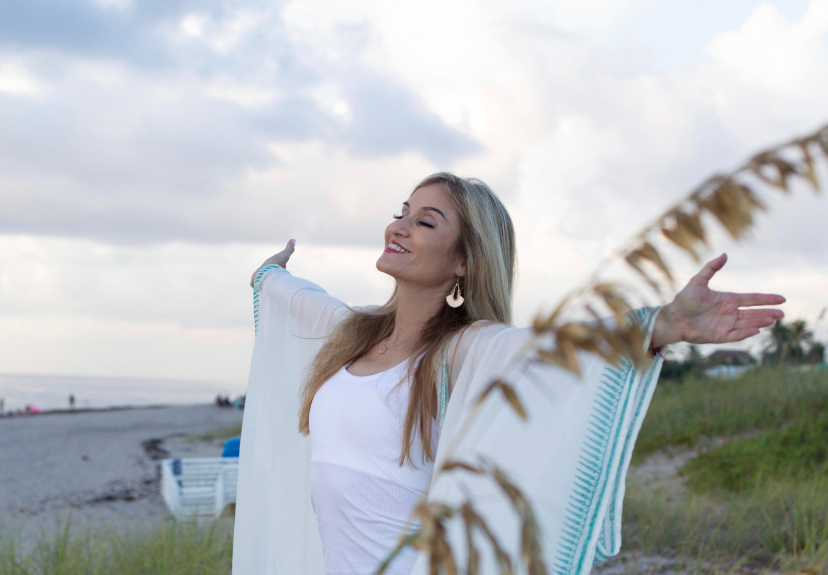
Mar 30, 2022 | Programming Spotlights, Sedona Yoga Festival Teacher Feature
Fern Conn, who opened her yoga studio Dancing Lion in the midst of the Covid-19 pandemic, is no stranger to the struggles and challenges that the past couple of years have wrought. “There’s not a single soul that has not been affected by the goings-on in the world in the past couple of years,” she acknowledges. “We all have this newfound grace to keep that softness, that tenderness in our hearts, so that we don’t go back to the ‘old ways,’” she says. The theme for SYF2022, Give It Up For Grace, is one major reason she was drawn to the event. Heart-centered, soft, and tender is how she teaches — and what she’s excited to share with the SYF community this June.
One of her signature classes, Devotional Flow, is something she’s excited to share, as well as her tongue-in-cheek named Yin & Tonic, in which she combines yin yoga with another healing modality, such as acupuncture or yoga nidra. Though Fern has a dance background, she tends to integrate more than just movement into her classes, encouraging practitioners to consider their reason for being there, rather than just showing up.
“What is your true north?” she asks students. “What has the last couple of years really brought up for you as an important aspect of your wellbeing in life?” That’s how her classes become a meditation on living as well as a practice, making her energetic and emotional-based approach resonate with so many.
Why An Anatomical Approach Isn’t How She Teaches
Trained in dance at The Martha Graham Dance Studio as well as other studios in New York City, Fern has plenty of alignment based experience, and a physical approach is very much in her wheelhouse. “I believe that a lot of the anatomical cues we have used in the past simply do not work for many students,” she says. “I teach to the bodies in front of me. When you force someone into a Warrior I with a heel to arch alignment, it simply does not always make sense. For example, when I have middle aged women from Boca Raton in my class, they simply have a different range of motion than 12 year old boys in India who first practiced yoga. The body needs to be tended to.”
This fluidity is one thing that people can expect to take away from her classes at SYF. She also hopes to impart a “felt experience” for practitioners, she says. “I weave a very rich thematic experience into every class,” she says. She feels the energy of the room, and teaches from that perspective.
She’s quick to note that that doesn’t mean that she thinks everyone will walk away from her classes happier — she’s not into the kind of spiritual bypassing that doesn’t allow for true emotional processing through practice.
“Lately, I’ve felt a great heaviness stirring in people,” she says. “Sometimes we get deep; we’re moving energy, the debris that sits in our connective tissue, and we’re stirring that up. I think to just be able to hold space for that is the ultimate goal,” she says.
A Warm Feeling
That’s not to say that Fern doesn’t want people to feel good when they leave her class, she says. Her goal is to at least leave people feeling better than when they came — and it’s safe to say that SYF attendees will receive that type of nourishment. “I treat my studio like an extension of my home,” she says. “That’s the energy that I hope to bring to SYF. I love the fact that people are gathering again, especially practicing yoga and meditation. We just need more light.”
Experience that light and warmth with Fern this June! Tickets are on sale now! Get yours here — bit.ly/SYF22Tix
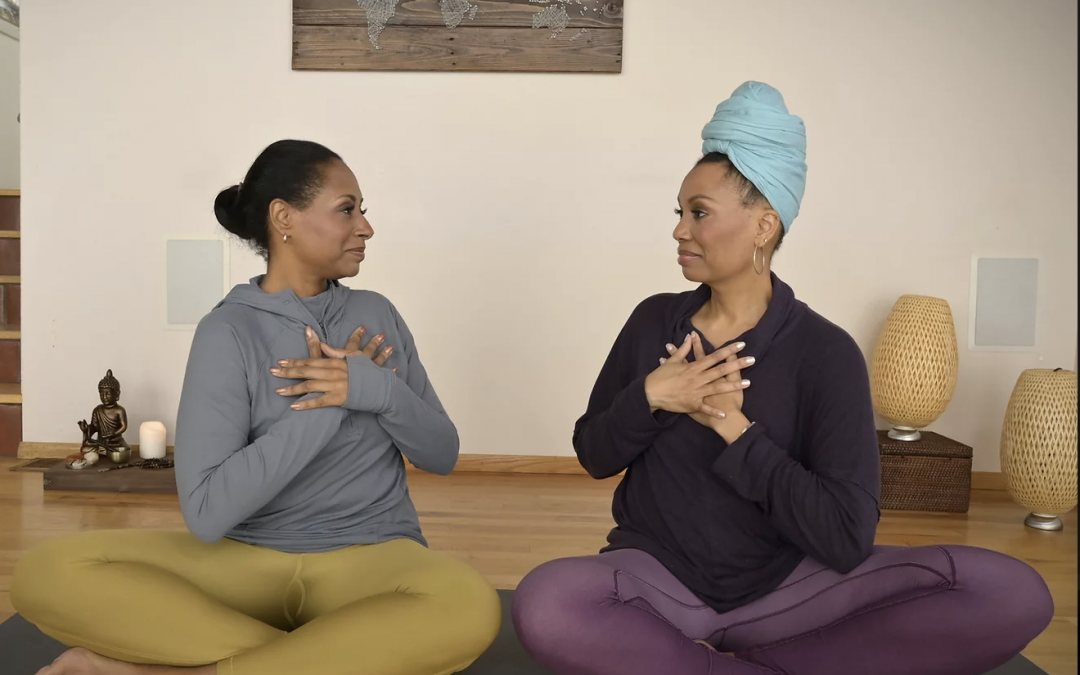
Mar 28, 2022 | Programming Spotlights, Sedona Yoga Festival Teacher Feature
The Yoga for PTSD Training has long been a signature offering of Sedona Yoga Festival. It’s just one of the many ways that SYF walks the walk — by recognizing that yoga is so much more than asana, and requires instructors to not only commit to furthering their education, but to consider ways to make their classes welcoming and accessible to all people.
This year, we couldn’t be more excited that the training will be led by the founders of Retreat to Spirit, Amina Naru and Pamela Stokes Eggleston, joined by instructor Kwasi Boaitey. We’ll be examining trauma-informed instruction through the lens of not just PTSD, but social trauma as well, and exploring how to truly make a yoga class welcoming for all practitioners, regardless of race or background. We’ll also address the importance of creating a space that truly embodies the teachings of yoga, and how they pertain to issues in our greater world — how we can address the traumas of the world, and still create a refuge in our practice.
We sat down (digitally) with Amina and Pamela to discuss.
* * *
Sedona Yoga Festival (SYF): How did you get started doing trauma-informed work, and what can we expect from the training in June?
Amina Naru (AN): Pam and I are the former co-executive directors of the Yoga Service Council. Pamela was working with veterans and caregivers, and I had my own business working with incarcerated youth and adults. Through the Yoga Service Council we created a Best Practices series with Omega, a series of books that outlined yoga for people who were incarcerated, people recovering from drug addictions, and for schools.
While working with the YSC we petitioned YA to make it a mandatory part of 200-hrs, or perhaps 220hrs. We are currently actively working to make trauma-informed training a staple in 200hr teacher training. Because everyone has experienced some sort of trauma. And people who have aren’t just showing up in prisons or community centers or the VA — we’re showing up in the yoga studio and in “mainstream” yoga.
Pamela Stokes Eggleston (PE): There are plenty of microaggressions happening within yoga spaces, and it’s causing more harm than good. It’s multi-layered. Yoga teachers are stepping into their classes with an intention to serve or help, but often first-time students walk away from a class thinking “it’s not for me,” or didn’t have a good experience — and it’s due to a lack of training for new teachers.
Really teaching asks you to teach to who shows up in the room, and to really see that person. It also requires basic self inquiry and self reflection. We always talk about the yamas and niyamas, but to integrate them may take someone really examining the way they’ve done things. We know that yoga is an embodied practice — a mind, body, spirit practice. We know that people are getting the bare minimum in a 200-hour YTT, and often a 500-hour YTT. But how can we transmute what has been looked out, to not stay on the surface level of spiritual bypassing that “we are all one”? We can’t ignore the fact that George Floyd got murdered or that there are people in the Ukraine and Russia who don’t want this war. We need to speak to what’s happened. There was trauma as a result of Covid, for example — we need to be able to serve people in these difficult times. That’s the kind of information we’re plugging in, adjusting our training to reflect.
The terms “trauma” and “trauma-informed” are always going to be evolving, because there’s always going to be trauma. It’s really about how we look at it, how we go through it — it’s how the yoga teaches us to ride the waves. The reason I believe that we are here and why we’re at a precipice is because we’ve danced around trauma. We’ve been so individualistic, particularly in Western societies, that we don’t see ourselves in others. This is a different level of work. You have to be willing to change and shift your practice. This goes beyond the studio. This is an inside job.
SYF: What about people who think that politics don’t belong in practice? That yoga is an escape?
AN: There’s a negative connotation around what politics is, what a politician is. But if you really look at it, politics are just life happenings. Life happenings are war. Life happenings are Black people getting murdered by cops — life happenings are Black Lives Matter. People come to yoga to escape — and that’s when the bypassing happens. The new reality and the new paradigm and the new ways of thinking — we have to step into that as yoga teachers, yoga therapists, as whatever the work we’re doing in this healing space. If we are not willing to do that work, and this would be my kind of mantra, one of many, to anybody that signs up for this program: You have to be willing to step into that full on and go through it.
Don’t miss this incredible opportunity to learn from these luminaries. You may purchase a single ticket to the Trauma-Informed Training, or as an an add-on to your All-Access Pass. Learn more about ticketing options here.
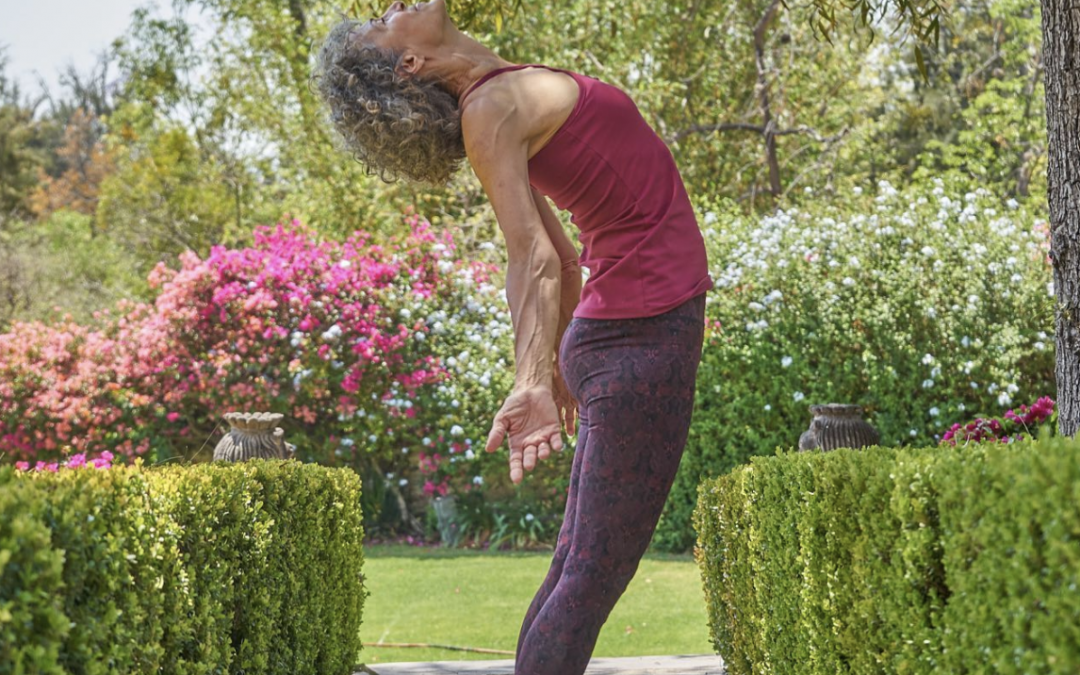
Mar 14, 2022 | Sedona Yoga, Sedona Yoga Festival Teacher Feature, Yoga Interviews
Desiree Rumbaugh — Moving Through the Ages with Yoga
When we tend to think of yoga that’s accessible for all ages and for aging bodies, we trend toward restorative and gentle yoga, as if our aging bodies across the board lose the will for a physical challenge. It doesn’t have to be that way, according to international teacher, author, and PBS contributor Desiree Rumbaugh. “When I was younger, I’d always hear older people saying, ‘I used to do this or that,’” she says. As a very athletic and disciplined practitioner, this wasn’t how Desiree envisioned her own practice changing through the years. She figured that there had to be a way to continue to age well, without giving up the difficult physical practice.
As she herself crossed the threshold of 50 and beyond, that’s what her teaching began to showcase. “How do we keep the party going? How do we keep the fun going? How do we keep our wrists and our back and our knees and our neck able to withstand these poses without injury? So that’s what my teaching is like,” she says, “answering those questions and giving people a lot of ideas.”
Creating a Community
Desiree isn’t alone in this pursuit. She has what she calls a pit crew of physical therapists, weight trainers, and different people to advise her and keep her — and her students — safe as she explores what it means to embrace physicality for older bodies. As the Western yoga world continues to move toward accessibility, Desiree says that she inhabits an important space. “I think that’s kind of interesting to go learn from the lady who’s 63,” she says, “the lady who has been doing this for 35 years, and does everything like handstands and backbends.”
It’s not only an inspiration because of her age, but because of what that kind of flexibility — both physical and of the boundaries we consider in our own minds about the physical — represents. “It’s not because I’m lucky,” says Desiree. “I’ve had to work to change habits and figure out why these pains were there. I’ve had a lot of ups and downs just like everybody,” she says. “How have I gone into it instead of around it or avoiding it?”
This doesn’t mean just haphazardly experimenting with advanced poses. In her thirties, Desiree recalls just being able to go the park, for example, and kicking up into a handstand. This isn’t a possibility at 63, when the stakes are much higher if she falls. This “makes me more aware and conscious,” she says, “so there’s the mind aspect. I think as we age, we need to have stimulation of new thoughts and new ideas and new experiences.” That’s what Desiree’s teaching is really all about.
What Students Can Expect in Her Class
Desiree recognizes that her approach may not be for everybody — but she’s not trying to be. She wants her students to explore their own boundaries, and learn something about themselves that they may not have thought was possible. Her classes inspire students to understand that hard work and dedication results in progress; that you have the power to change your body and your mindset for the better. She also wants to “stress the fun of playing in a yoga class with your friends, even though it can be solitary practice. That’s a big one for me,” she says, “the joy of connecting with others in a playful way where we encourage each other and the support of the community.”
That’s what being at SYF is all about for Desiree — that connection of being with others of likemind, “supported by the breathing and the chanting and the working together mindfully in the present moment.” It’s why we’re so excited to be back together after two years apart, and why we hope you’ll join us in June.
Tickets are on sale now! Come experience the transformation of SYF with us. We can’t wait to see you soon.
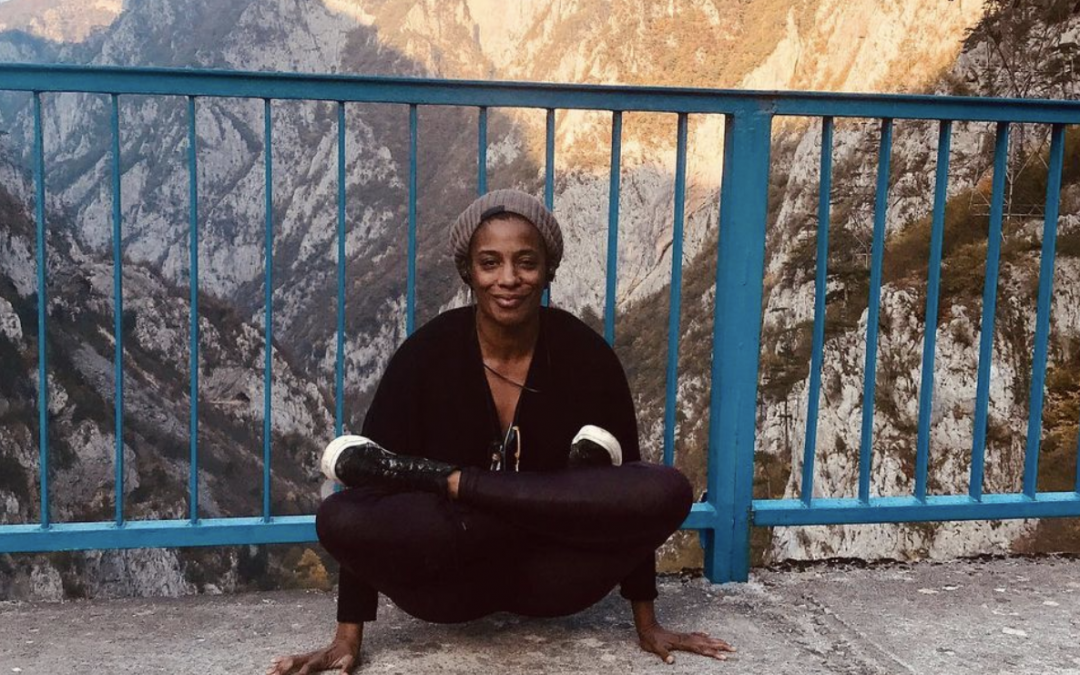
Mar 1, 2022 | Sedona Yoga, Sedona Yoga Festival Teacher Feature
Oneika Mays: Why Diversity of Ideas is Important at Yoga Festivals
Oneika Mays doesn’t consider herself a big “festival person,” and typically shies away from appearing at large scale yoga events. The New York-based Riker’s Island meditation teacher said that she’s most excited about the space that SYF is creating for the tough conversations. Among other things, finding common ground with people with whom she may not necessarily agree is paramount to Oneika’s teaching mission.
“I think the work needs to get a little messy,” she says. “And that’s what I’m hoping to bring to Sedona. I want to create a container of compassion and lovingkindness and metta — which I’m really passionate about — being able to move and talk and breathe and listen,” even when we may not agree with each other.
In the wake of Covid, civil unrest, political upheaval, conspiracy theories, and war, it’s never been a more apt time for the world to hear Oneika’s message. When we live solely on one end of the spectrum or the other, she says, “I feel like it’s damaging. The noise starts to sound the same.” She uses the hot topic of vaccination as an example. While she considers herself a staunch proponent of them, “I’m not going to cancel somebody who doesn’t believe in vaccinations,” she says. “What would that say about me?” Her work at Riker’s is the same way — she often interacts with people with whom she does not agree. “It’s all about finding places of compassion,” she says. “Walking the walk is really hard.”
Why the Experience of SYF Matters
In order to begin to bring about the collective healing for which we’re all searching — regardless of belief system of political stance — we have to start somewhere. “I think it starts with giving grace to ourselves individually,” says Oneika. That doesn’t mean that we don’t evolve, and it isn’t an excuse for the kind of spiritual bypassing that results in entirely individualistic evolution.
“The grace comes in when we understand that we all start somewhere; that our views and beliefs can change,” says Oneika. This means listening to new voices and perspectives — really listening — and then allowing for those perspectives to take root in a meaningful way. When the transformation happens within, you are able to start giving grace to others as well.
“I think that’s what yoga is all about,” says Oneika, “having these internal conversations with the noise that’s inside your head and finding ways to understand it, or even just ask questions about it, and to do that with compassion. That’s what I’m hoping people do when they’re in community with me.”
Why It’s Important to Hear New Voices
One of the main programming goals of SYF this year is to bring some new voices to the festival circuit, like Oneika. She said that this is crucial because when we don’t see other people who have come from other places and have had other types of experiences than our own, we really can’t begin to understand the concept of oneness. “The idea of oneness is easy to say when everybody that you’re standing in a circle with looks exactly like you and has the same experiences as you,” says Oneika.
This isn’t a starry-eyed or overly-optimistic perspective. “This isn’t about gathering a bunch of different voices and everybody holding hands and singing kumbaya and sort of going off into the sunset, because that’s not realistic,” laughs Oneika. “Life is uncomfortable, and we can learn to move through discomfort in these kinds of small doses, a little bit at a time.”
In doing this, Oneika believes that we really can work together to create a more compassionate, empathetic, and understanding society. It’s when we truly look through the lenses of truth and honor that we can live our yoga — no matter what your personal beliefs are. This is what grace truly looks like.
Join Oneika for the tough conversations, and create the space in your life for transformation by joining us this June! Tickets on sale now.







